Description
Dill Dukat – Dukat dill
50 Seeds per pack
Annual Herb
Days to Maturity: 60–70 Days
Sun Requirements: Full Sun to Light Shade
Botanical Name: (Anethum graveolens)
Bred in Denmark for the Scandinavian cuisine, Dukat Dill stands out for its sweeter flavor and abundant foliage. It grows to a height of 18–24 inches, with finely cut, blue-green leaves that are darker and denser than most, creating a lush, full plant. This variety maintains its leafy growth longer before producing flower heads, extending the harvest season for “Dill weed”. Large 10-inch umbels yield aromatic seeds ideal for pickling and seasoning. Slower to bolt than many dills, Dukat handles warmer weather while continuing to produce fragrant, flavorful leaves.
Mild and slightly sweet, its fresh leaves enhance steamed vegetables, sliced tomatoes, cucumbers, salads, dressings, and sauces. It pairs beautifully with fish and Mediterranean dishes. Allowing some plants to flower provides seed heads perfect for pickling and spice blends, and if left in the garden, it will reseed itself for the following year.
Rich in essential oils, Dukat Dill is not only flavorful but also aromatic. Its seeds are used in culinary and cosmetic applications, and has long been prized for aiding digestion and easing colds. Packed with vitamins A and C, along with folate, calcium, and magnesium, Dukat Dill is a healthy and delicious choice for the herb garden.
Planting Instructions for Dill – Dukat Seeds
When to Plant:
Sow dill seeds directly outdoors after the danger of frost has passed and the soil has warmed to at least 60°F (15°C)—typically in late spring. Because dill develops a long taproot and doesn’t transplant well, direct seeding is preferred. For a steady supply of fresh leaves, sow additional batches every 2 to 3 weeks through midsummer. Indoors, dill can be grown year-round if given enough light and space for its roots.
Where to Plant:
Choose a location with full sun (6–8 hours of direct light) and protection from strong winds, as dill’s tall, hollow stalks can be blown over easily. Dill thrives in well-drained, fertile soil rich in organic matter with a slightly acidic to neutral pH between 6.0 and 7.0. Raised beds and deep containers also work well, especially for compact varieties like Dukat dill.
How to Plant:
Sow seeds about ¼″ (6 mm) deep and ½″ apart in rows spaced 12–18″ apart. For containers, use a pot at least 15″ deep to accommodate the taproot, and sow seeds thinly over the surface. Water the soil thoroughly after sowing. Seedlings emerge in 10–14 days. Once they are 2–3″ tall, thin to 10–12″ apart to give plants ample room to develop. In cold or windy areas, plants may benefit from a cloche or stake support.
How to Grow:
Keep soil consistently moist, especially during germination and hot and dry spells. Dill is not a heavy feeder; enrich the soil with compost before sowing, and side-dress with a balanced fertilizer (10-10-10) if growth is slow. For bushier plants, regularly pinch back the growing tips and remove early flower stems. Taller varieties may need staking. To avoid early bolting in hot weather, water deeply once or twice a week and mulch around the base of the plant to retain moisture and suppress weeds.
Harvesting Tips:
Begin harvesting leaves when plants are about 8″ tall—roughly 6–8 weeks after sowing. Snip off outer leaves or young tips as needed, always leaving some foliage to support continued growth. Harvest regularly to prevent flowering. To collect seeds, wait until flower heads dry and seeds turn tan. Cut the entire seed head and hang upside down in a paper bag to catch the seeds as they drop. Store fully dried seeds in an airtight container in a cool, dark place.
Seed Saving:
Dill seeds remain viable for up to 5 years if stored dry and cool. We offer seed-saving envelopes that are ideal for organizing and labeling your own collection.
Companion Planting:
Dill pairs well with Brassicas like broccoli and cabbage, repelling pests and attracting beneficial insects such as wasps, bees, and predatory hoverflies. Avoid planting near carrots, as dill may inhibit their growth.
FAQ:
What is the historical or notable background of Dukat Dill?
Bred in Denmark specifically for traditional Scandinavian cuisine, Dukat Dill is renowned for its abundant foliage and sweet, aromatic flavor, and high essential oil content distinguishing it from other dill varieties.
How would you describe the flavor of Dukat Dill?
Dukat Dill has a gentle, subtle sweet flavor that’s more mild than standard dill. Ideal for light dishes and salads. The seeds carry a more concentrated aromatic note, making them perfect for pickling and spice blends.
What does Dukat Dill look like, and what are its growing habits?
This bushy annual grows 18–24 inches tall, forming dense clumps of finely cut, blue-green foliage. The leaves are darker and more plentiful than those of many other dill types. Its massive, 10-inch umbrella-shaped flower heads appear later, helping prolong the leafy harvest. Dukat is known for resisting early bolting, even in warmer conditions.
When and how do I harvest Dukat Dill?
You can begin harvesting Dukat Dill once the plant has at least four to five mature leaves, typically around 60–70 days after sowing. Regular leaf harvesting delays flowering. To collect seeds, wait until they begin to turn brown, then cut the entire head and dry it upside down in a paper bag.
When is the best time to plant Dukat Dill?
Plant Dukat Dill outdoors once the danger of frost has passed. For continuous harvests, sow seeds every 2–3 weeks. Dill prefers full sun to light shade and grows best in well-drained, moderately rich soil. Avoid planting near carrots or tomatoes, as dill may compete with them chemically and physically.
What are the common culinary uses for Dukat Dill?
Dukat Dill’s fresh leaves are perfect for cucumber salads, tomato dishes, and creamy dressings. They pair beautifully with fish and are a staple in Mediterranean and Scandinavian cuisines. Its seeds are a go-to for pickling and also add depth to spice rubs, marinades, and vinegar infusions.
What’s the best way to store Dukat Dill after harvest?
To store fresh leaves, refrigerate them in a damp paper towel or freeze them chopped in water-filled ice cube trays. For longer-term storage, dry the leaves in a cool, dark area or use a dehydrator. Once dried, store in an airtight container. Seeds should be fully dried and stored in jars away from heat and light.
What nutrients does Dukat Dill provide?
Dukat Dill is a powerhouse of nutrients including vitamins A and C, folate, calcium, and magnesium. These contribute to healthy vision, immune support, and bone health. It’s also rich in antioxidants and essential oils that aid digestion and provide anti-inflammatory benefits.
Is Dukat Dill used in perfumes or essential oils?
Yes, Dukat Dill contains a high concentration of essential oils, making it valuable beyond the kitchen. Its seeds and foliage are used in essential oil production for their sweet, fresh, slightly spicy scent. These oils are used in perfumes, soaps, and aromatherapy for their calming, cleansing properties.
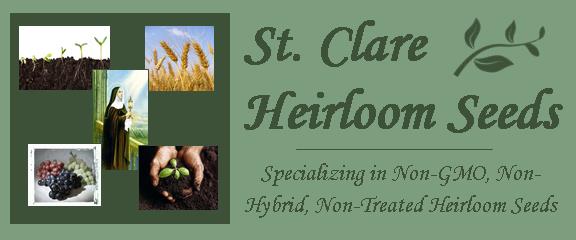
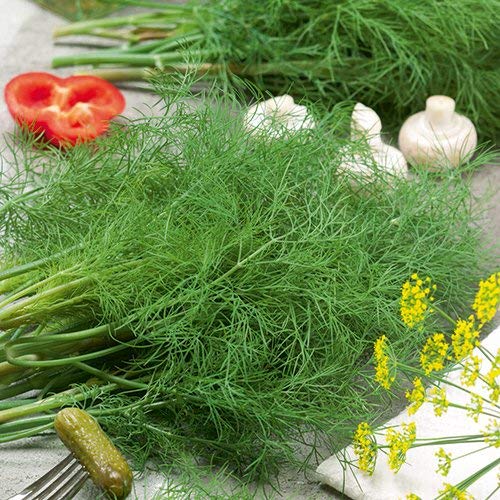
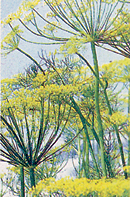









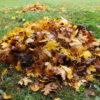
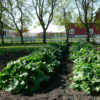

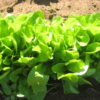
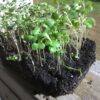

Patricia Q. (verified owner) –
Awesome seed and seed company
JUDY –
excellent
Hazel Hardisty (verified owner) –
Excellent!
Sally (verified owner) –
David S. (verified owner) –
Lisa Johns (verified owner) –